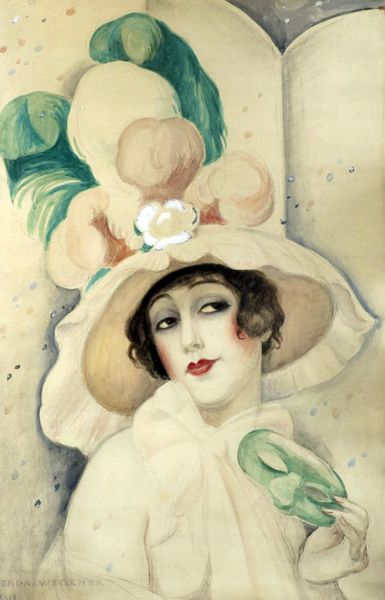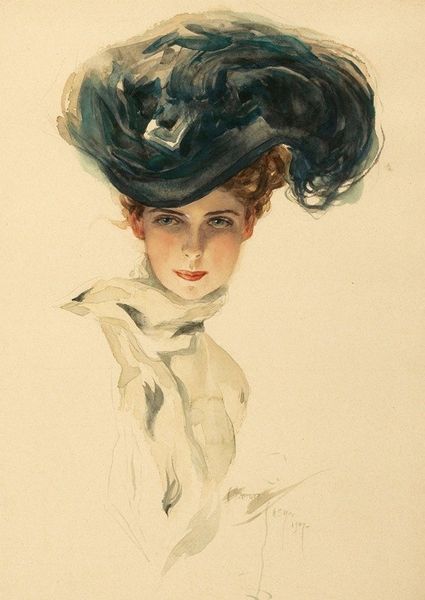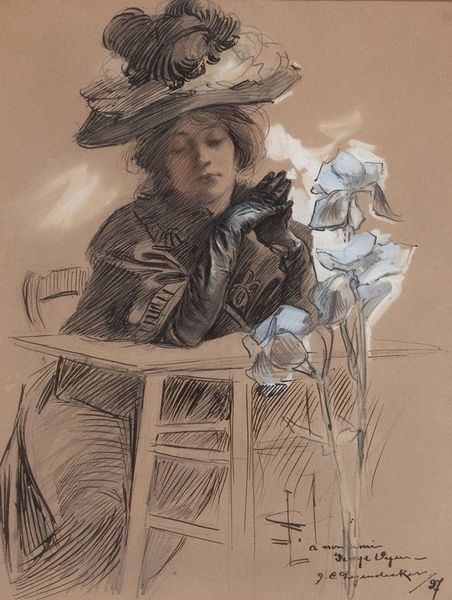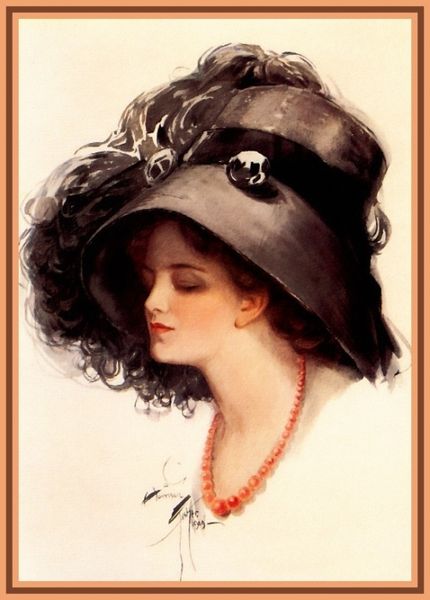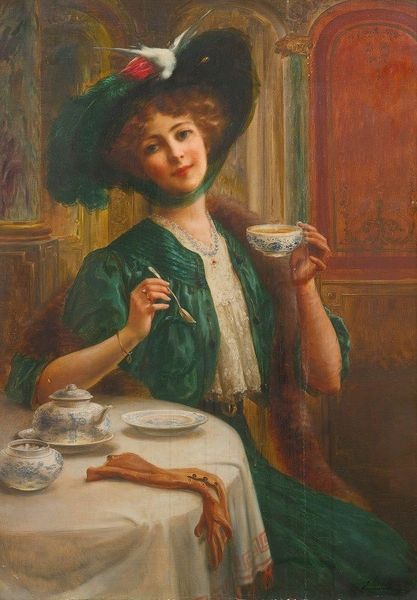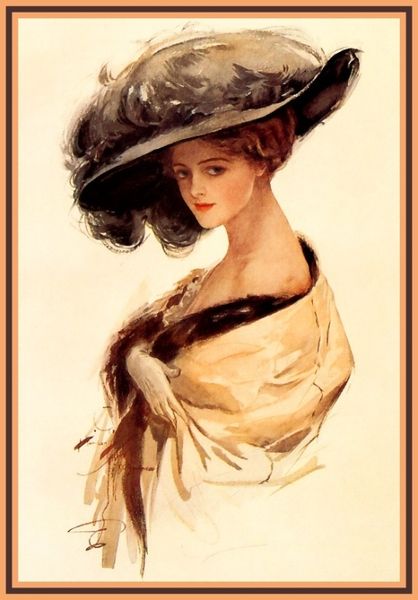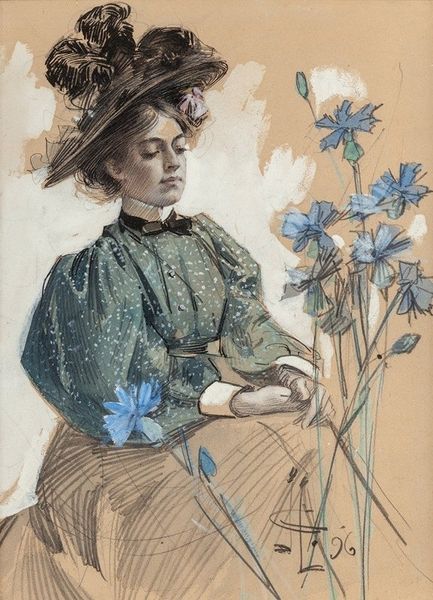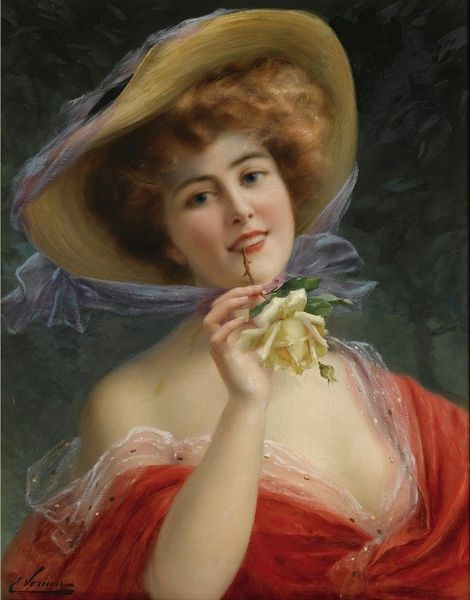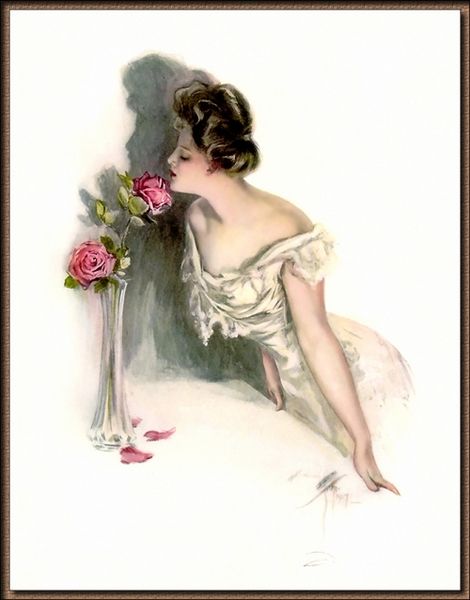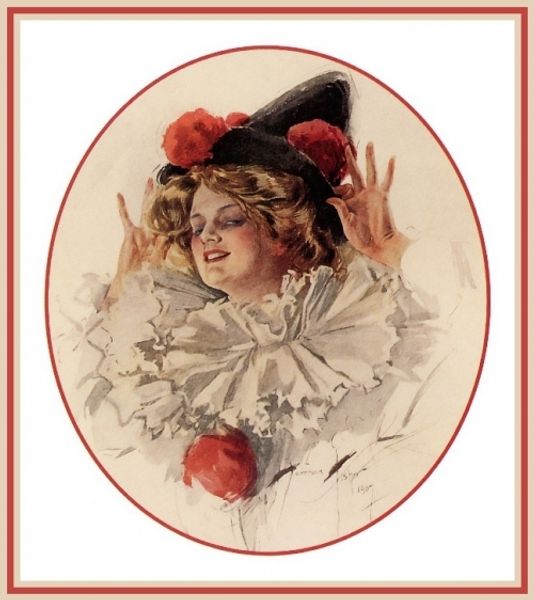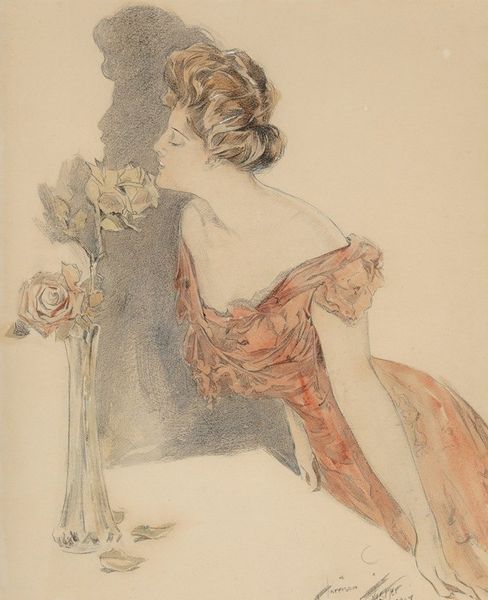
Copyright: Public Domain: Artvee
Editor: This is Harrison Fisher's "Afternoon Tea," created around 1925, looks like it's watercolor and maybe some oil on paper. There's a strong emphasis on delicate details; the teacup seems almost weightless in her hands, but I'm wondering about what all that finery—the hat, the china—tells us about the conditions of its creation? Curator: Indeed. Let's consider the socio-economic context of the piece. Think about the materials themselves. Watercolors, often seen as less "serious" than oils, were commercially available in pre-packaged sets, enabling a democratization of artistic production and consumption during the early 20th century. Who could access these materials and lessons? What class of women did they cater to? Editor: That's a good point, her clothes also tell a story! This wasn't accessible for all social classes, which creates some inherent biases when interpreting her portrayal. Curator: Precisely. And look at the way Fisher has depicted her dress. Its decoration almost appears to fade in the way an object might dissolve through excessive use; its aesthetic value degraded. Do we read some degree of cultural criticism within its representation of consumer culture? Editor: That is very interesting, her clothing doesn't overpower the piece; it blends right in and serves as part of the mood, not as its main focal point. Curator: Exactly! It becomes almost incidental. Even the act of taking tea, typically ritualized and carefully orchestrated, appears softened, fleeting, somewhat frivolous. Editor: I didn’t think about the material suggesting the subject's financial and social status but it does speak to the means of production, and labor of that era. This piece provides new ways of analyzing the depicted society. Curator: It offers a lens to examine the intersection of artistic production, material accessibility, and the construction of femininity in the early 20th century. A wonderful painting, and such a generative object for new ways of considering art’s relationship with commerce.
Comments
No comments
Be the first to comment and join the conversation on the ultimate creative platform.
